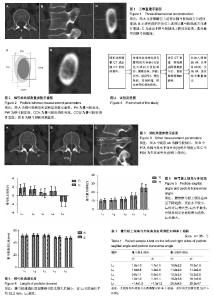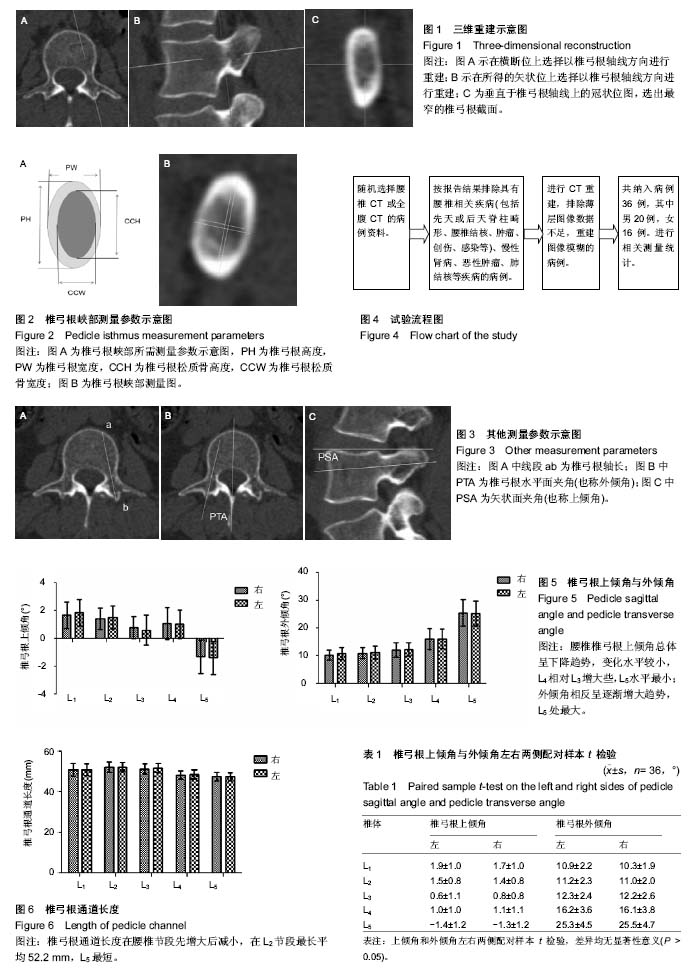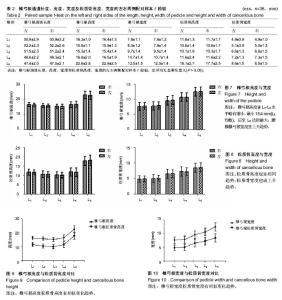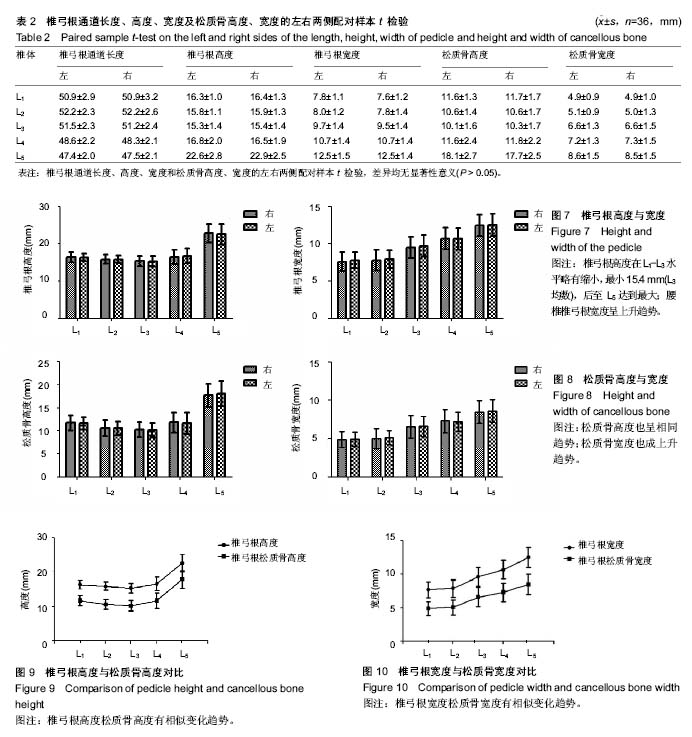| [1] Gailloud P, Beauchamp N, Martin J, et al. Percutaneous pediculoplasty:polymethylmethacrylate injection into lytic vertebral pedicle lesions. J Vasc Interv Radiol. 2002;13(5):517-521.[2] Modi HN, Suh SW, Fernandez H, et al. Accuracy and safety of pedicle screw placement in neuromuscular scoliosis with free-hand technique. Eur Spine J. 2008;17(12):1686-1696.[3] Gelalis ID, Paschos NK, Pakos EE, et al. Accuracy of pedicle screw placement: a systematic review of prospective in vivo studies comparing free hand, fluoroscopy guidance and navigation techniques. Eur Spine J. 2012;21(2):247-255.[4] Watanabe K, Matsumoto M, Tsuji T, et al. Ball tip technique for thoracic pedicle screw placement in patients with adolescent idiopathic scoliosis. J Neurosurg Spine. 2010;13(2):246-252.[5] Tian NF, Xu HZ. Image-guided pedicle screw insertion accuracy: a meta-analysis. Int Orthop. 2009;33(4):895-903.[6] Boucher HH. A method of spinal fusion. J Bone Joint Surg Br. 1959; 41-B(2):248-259.[7] 唐天驷. 胸腰椎骨折患者的椎弓根短节段脊柱内固定器治疗[J]. 苏州医学院学报, 1989,30(3):178.[8] 陈耀然,唐天驷. 后路内固定术有关解剖结构在脊柱外科上的应用和评价[J]. 中国临床解剖学杂志,1989,7(4):238-240.[9] Magerl FP. Stabilization of the lower thoracic and lumbar spine with external skeletal fixation. Clin Orthop Relat Res.1984;(189):125-141.[10] Misenhimer GR, Peek RD, Wiltse LL, et al. Anatomic analysis of pedicle cortical and cancellous diameter as related to screw size. Spine (Phila Pa 1976).1989;14(4):367-372.[11] Hou S, Hu R, Shi Y. Pedicle morphology of the lower thoracic and lumbar spine in a Chinese population. Spine (Phila Pa 1976). 1993; 18(13):1850-1855.[12] 陈耀然,唐天驷. 椎弓根的观测及其临床意义[J]. 中华外科杂志, 1989, 27(10):578-580.[13] Zindrick MR, Wiltse LL, Doornik A, et al. Analysis of the morphometric characteristics of the thoracic and lumbar pedicles. Spine (Phila Pa 1976). 1987;12(2):160-166.[14] Nojiri K, Matsumoto M, Chiba K, et al. Morphometric analysis of the thoracic and lumbar spine in Japanese on the use of pedicle screws. Surg Radiol Anat. 2005;27(2):123-128.[15] Kim NH, Lee HM, Chung IH, et al. Morphometric study of the pedicles of thoracic and lumbar vertebrae in Koreans. Spine (Phila Pa 1976). 1994;19(12):1390-1394.[16] Krag MH, Beynnon BD, Pope MH, et al. An internal fixator for posterior application to short segments of the thoracic, lumbar, or lumbosacral spine. Design and testing. Clin Orthop Relat Res.1986;(203):75-98.[17] Louis R. Fusion of the lumbar and sacral spine by internal fixation with screw plates. Clin Orthop Relat Res.1986;(203):18-33.[18] Roy-Camille R, Saillant G, Mazel C. Internal fixation of the lumbar spine with pedicle screw plating. Clin Orthop Relat Res.1986;(203): 7-17.[19] Lehman RJ, Polly DJ, Kuklo TR, et al. Straight-forward versus anatomic trajectory technique of thoracic pedicle screw fixation: a biomechanical analysis. Spine (Phila Pa 1976).2003;28(18): 2058-2065.[20] Sterba W, Kim DG, Fyhrie DP, et al. Biomechanical analysis of differing pedicle screw insertion angles. Clin Biomech (Bristol, Avon). 2007; 22(4):385-391.[21] Panjabi MM, O'Holleran JD, Crisco JR, et al. Complexity of the thoracic spine pedicle anatomy. Eur Spine J. 1997;6(1):19-24.[22] 陈开润,刘蜀生.腰椎椎弓根内部结构的解剖学研究[J]. 四川解剖学杂志, 2007,15(3):26-28.[23] Krag MH, Beynnon BD, Pope MH, et al. Depth of insertion of transpedicular vertebral screws into human vertebrae: effect upon screw-vertebra interface strength. J Spinal Disord. 1988;1(4):287-294.[24] 饶书城. 脊柱外科手术学[M]. 2版.北京:人民卫生出版社,1999:354-356.[25] Atlas SW, Bressler EL, Weinberg PE, et al. Roentgenographic evaluation of thinning of the lumbar pedicles. Spine (Phila Pa 1976). 1993;18(9):1190-1192.[26] Benzian SR, Mainzer F, Gooding CA. Pediculate thinning: a normal variant at the thoracolumbar junction. Br J Radiol.1971;44(528): 936-939.[27] 何伟,钱宇,杨万雷,等. 胸腰段窄小椎弓根的应用解剖学研究[J]. 中华骨科杂志, 2017,37(1):36-43.[28] 王方永,李建军. 胸腰椎椎弓根解剖参数三维分析[J]. 中国康复理论与实践,2012,18(2):134-136.[29] Makino T, Kaito T, Fujiwara H, et al. Analysis of lumbar pedicle morphology in degenerative spines using multiplanar reconstruction computed tomography: what can be the reliable index for optimal pedicle screw diameter? Eur Spine J. 2012;21(8):1516-1521. |



